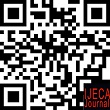Picture and Picture Learning Model in Improving Speaking Skills Elementary School Students
Abstract
Keywords
Full Text:
DOWNLOAD [PDF]References
Amon, L., & Bustami, M. R. (2021). Implementation of School-Based Management in Curriculum and Learning Processes: a Literatur Review. Jurnal Pendidikan Dasar Dan Menengah (Dikdasmen), 1(1), 1–11. https://doi.org/10.31960/dikdasmen-v1i1-1060
Arikunto, S. (2021). Penelitian tindakan kelas: Edisi revisi. Bumi Aksara.
Bai, S., Hew, K. F., & Huang, B. (2020). Does gamification improve student learning outcome? Evidence from a meta-analysis and synthesis of qualitative data in educational contexts. Educational Research Review, 30, 100322. https://doi.org/10.1016/j.edurev.2020.100322
Bazeley, P. (2021). Qualitative Data Analysis: Practical Strategies. https://researchdirect.westernsydney.edu.au/islandora/object/uws:59691/
Carless, D., & Winstone, N. (2020). Teacher feedback literacy and its interplay with student feedback literacy. Teaching in Higher Education, 1–14. https://doi.org/10.1080/13562517.2020.1782372
Chou, H.-L., & Chou, C. (2019). A quantitative analysis of factors related to Taiwan teenagers’ smartphone addiction tendency using a random sample of parent-child dyads. Computers in Human Behavior, 99, 335–344. https://doi.org/10.1016/j.chb.2019.05.032
Frince S, M., & Tambunan, M. A. (2020). The Development of Teaching Materials Based on Local Assistance in the Appreciation Materials of Indonesian Education Students UHKBPNP. Budapest International Research and Critics in Linguistics and Education (BirLE) Journal, 3(4), 1719–1725. https://doi.org/10.33258/birle.v3i4.1317
Gonzalez, T., de la Rubia, M. A., Hincz, K. P., Comas-Lopez, M., Subirats, L., Fort, S., & Sacha, G. M. (2020). Influence of COVID-19 confinement on students’ performance in higher education. PLOS ONE, 15(10), e0239490. https://doi.org/10.1371/journal.pone.0239490
Hasyda, S., & Djenawa, A. (2020). Penerapan Pembelajaran Kooperatif Picture and Picture Bermedia Mind Map untuk Meningkatkan Kemampuan Literasi Sosoal Pada Peserta Didik Sekolah Dasar. Jurnal Basicedu, 4(3), 696–706. https://doi.org/10.31004/basicedu.v4i3.414
Indriati, A., & Rukmini, D. (2016). The effectiveness of picture series and graphic organizer on students with high and low motivation in comprehending narrative texts. Language Circle: Journal of Language and Literature, 11(1), 13–24. https://doi.org/https://doi.org/10.15294/lc.v11i1.7845
Kustyarini, K. (2020). Self Efficacy and Emotional Quotient in Mediating Active Learning Effect on Students’ Learning Outcome. International Journal of Instruction, 13(2), 663–676. https://doi.org/10.29333/iji.2020.13245a
Lasfeto, D. (2020). The relationship between self-directed learning and students’ social interaction in online learning environment. Journal of E-Learning and Knowledge Society, 16(2), 34–41. https://doi.org/https://doi.org/10.20368/1971-8829/1135078
Lidyawati, T., & Nirwanto, R. (2016). The effectiveness of picture series toward the students’ writing scores.
Nasreen, K., & Afzal, M. T. (2020). Strengths, weaknesses, opportunities and threats in higher education: a SWOT analysis of Allama Iqbal Open University Islamabad (Pakistan). Asian Association of Open Universities Journal, 15(3), 321–333. https://doi.org/10.1108/aaouj-11-2019-0052
Nurhasanah, F., Sukandi, U., Kuncoro, A. B., Rusilowati, A., Hastuti, W. S., & Prabowo, A. (2020). Collaborative classroom action research for mathematics and science teachers in Indonesia. Journal of Physics: Conference Series, 1613(1). https://doi.org/10.1088/1742-6596/1613/1/012024
Parnawi, A. (2020). Penelitian tindakan kelas (classroom action research). Deepublish.
Putri, A., & Taufina, T. (2020). Peningkatan Hasil Belajar Menggunakan Model Cooperative Tipe Picture and Picture di Sekolah Dasar. Jurnal Basicedu, 4(3), 644–648. https://doi.org/10.31004/basicedu.v4i3.415
Rasmitadila, R., Tambunan, A. R. S., Achmadtullah, R., Nuraeni, Y., Samsudin, A., & Nurtanto, M. (2021). Teachers’ Instructional Interaction in an Inclusive Classroom: Interaction Between General Teacher and Special Assistant Teacher. International Journal of Special Education (IJSE), 35(1), 19–28. https://doi.org/10.52291/ijse.2020.35.2
Rusilowati, U., & Wahyudi, W. (2020). The Significance of Educator Certification in Developing Pedagogy, Personality, Social and Professional Competencies. Proceedings of the 2nd Social and Humaniora Research Symposium (SoRes 2019), 446–451. https://doi.org/10.2991/assehr.k.200225.095
Russo, J., Bobis, J., Sullivan, P., Downton, A., Livy, S., McCormick, M., & Hughes, S. (2020). Exploring the relationship between teacher enjoyment of mathematics, their attitudes towards student struggle and instructional time amongst early years primary teachers. Teaching and Teacher Education, 88, 102983. https://doi.org/10.1016/j.tate.2019.102983
Sangadah, K., Purwanti, E., Abidin, Z., & Sismulyasih, N. (2021). The Effectiveness Of Picture And Picture Learning Models On The Skills Of Writing Narrative Papers. Elementary School Teacher, 4(1). https://doi.org/10.15294/est.v4i1.29008
Sidabutar, Y. A., & Manihuruk, L. M. E. (2022). Keefektifan Media Audio-Visual dalam Meningkatkan Kemampuan Berbicara Siswa Sekolah Dasar. EDUKATIF : JURNAL ILMU PENDIDIKAN, 4(2), 1923–1928. https://doi.org/10.31004/edukatif.v4i2.2385
Sukardjo, M., & Salam, M. (2020). Effect of Concept Attainment Models and Self-Directed Learning (SDL) on Mathematics Learning Outcomes. International Journal of Instruction, 13(3), 275–292. https://doi.org/10.29333/iji.2020.13319a
Yulianti, H., Iwan, C. D., & Millah, S. (2018). Penerapan Metode Giving Question and Getting Answer untuk Meningkatkan Hasil Belajar Peserta Didik pada Mata Pelajaran Pendidikan Agama Islam. Jurnal Penelitian Pendidikan Islam, 6(2), 197. https://doi.org/10.36667/jppi.v6i2.297
Zhai, X., Wang, M., & Ghani, U. (2020). The SOR (stimulus-organism-response) paradigm in online learning: an empirical study of students’ knowledge hiding perceptions. Interactive Learning Environments, 28(5), 586–601. https://doi.org/10.1080/10494820.2019.1696841
DOI: https://doi.org/10.31764/ijeca.v5i2.10241
Refbacks
- There are currently no refbacks.
Copyright (c) 2022 Marlina Agkris Tambunan, Yanti Arasi Sidabutar, Rashmi Ranjan Panigrahi

This work is licensed under a Creative Commons Attribution-ShareAlike 4.0 International License.
IJECA (International Journal of Education and Curriculum Application) already indexed:










___________________________________________________________________
| |
____________________________________________________________________
IJECA Publisher Office:








.jpg)




